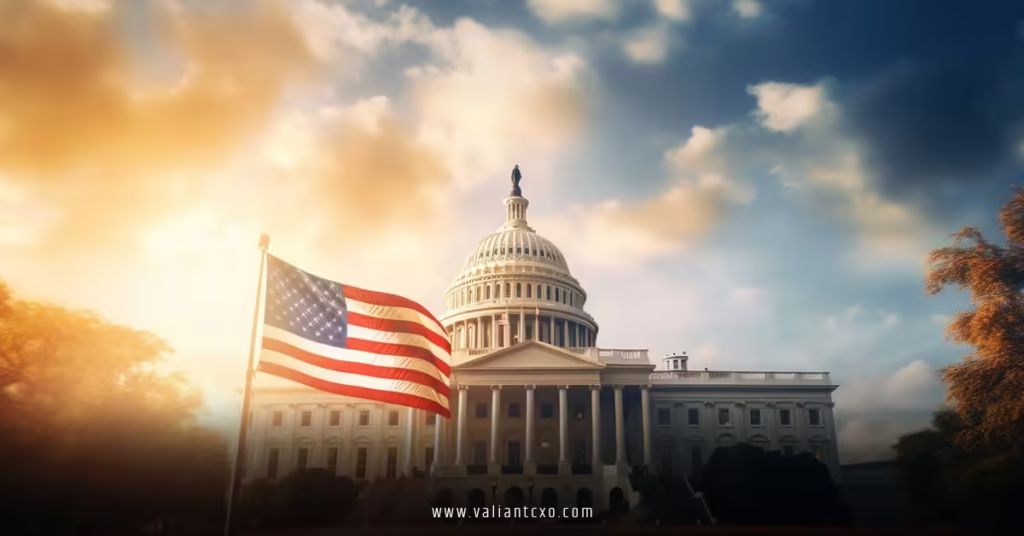US government shutdown impact on federal employees hits hard when political gridlock in Washington leaves millions of hardworking folks in limbo. Imagine clocking in every day, knowing your paycheck might not show up – that’s the reality for countless civil servants right now. As we dive into this mess, especially with the recent shutdown kicking off on October 1, 2025, let’s unpack what it really means for those on the front lines of our government.
What Triggers the US Government Shutdown Impact on Federal Employees?
Ever wonder why the gears of the massive US government machine suddenly grind to a halt? It all boils down to funding – or the lack of it. Congress has to pass spending bills to keep agencies running, but when they can’t agree, bam! Shutdown. Think of it like your household budget: if you and your spouse argue over bills and don’t pay the electricity, lights out. In government terms, without appropriations or a continuing resolution, non-essential operations stop cold.
This isn’t just theoretical. The current 2025 shutdown stemmed from heated debates over Medicaid cuts and health care tax credits. Democrats dug in their heels, refusing short-term fixes without protections, while Republicans pushed back. It’s a classic standoff, leaving federal employees as unwitting pawns in a high-stakes chess game. And guess what? These shutdowns aren’t rare birds; they’ve happened over 20 times since 1976, each time amplifying the US government shutdown impact on federal employees.
A Quick History Lesson on US Government Shutdown Impact on Federal Employees
Flash back with me. Remember the 2018-2019 shutdown? It dragged on for 35 grueling days, the longest ever. Over 800,000 federal workers went without pay, forcing many to dip into savings or take side gigs. Airports saw chaos with unpaid TSA agents calling out sick. Or take the 2013 shutdown – 16 days of furloughs that cost the economy billions and left employees scrambling.
Each episode builds on the last, showing patterns in the US government shutdown impact on federal employees. Shorter ones, like in 1995, still stung with delayed services. But the real kicker? These events erode trust in government stability. If you’re a fed, how do you plan your life around such uncertainty? It’s like living on a financial rollercoaster, never knowing when the next drop comes.

Breaking Down the Immediate US Government Shutdown Impact on Federal Employees
Right off the bat, a shutdown splits the workforce into camps. Furloughed employees? Sent home, no work, no pay. Essential ones? They grind on without a dime until it’s over. In this 2025 fiasco, up to 4 million folks – including some military – could feel the pinch. That’s a staggering number, right? Picture air traffic controllers staring at screens, unpaid, or park rangers locking gates on national treasures.
Furloughs: The Harsh Reality in US Government Shutdown Impact on Federal Employees
Furloughs hit like a sucker punch. You’re told not to come in, emails go dark, and projects stall. Under Trump-era plans, only about 23% might get furloughed this time, with agencies keeping more on deck. But for those affected, it’s brutal. No income means bills pile up – mortgages, groceries, you name it. And while a 2019 law promises back pay once it’s resolved, that doesn’t help in the moment. It’s like IOUs from your boss; great in theory, but try telling that to your landlord.
Essential Workers and the Unpaid Grind During US Government Shutdown Impact on Federal Employees
Now, the “excepted” crowd – think law enforcement, medical staff, or border security. They must show up, no excuses, but paychecks? Zilch until Congress sorts it. In 2018, 42,000 Coast Guard members worked through holidays without pay. Active-duty military? Same boat – all 1.3 million keep going, with no guaranteed back pay for everyone. It’s heroic, sure, but exhausting. How do you focus on protecting the nation when you’re worried about feeding your family?
Financial Fallout from US Government Shutdown Impact on Federal Employees
Money talks, and during shutdowns, it’s screaming. Delayed paychecks force tough choices: skip car payments? Rack up credit card debt? Many turn to food banks or loans. Unemployment benefits? Furloughed feds can apply for UCFE, but it’s state-by-state, with waits of 14-21 days and possible overpayments if back pay comes. Eligibility hinges on your duty station’s laws – no one-size-fits-all. And contractors? They’re out of luck, often furloughed without back pay promises.
The Emotional and Health Toll of US Government Shutdown Impact on Federal Employees
Beyond wallets, shutdowns mess with minds. Stress skyrockets – insomnia, anxiety, family tensions. It’s like carrying an invisible backpack of worry. Studies from past events show spikes in mental health issues among feds. Rhetorically, wouldn’t you feel undervalued if your job deemed essential but your pay optional?
Physical health suffers too. Delayed medical care because of skipped premiums? Common. And for retirees? The 2025 timing overlaps with open season, potentially delaying processes if HR is furloughed. It’s a domino effect, where one political hiccup topples personal well-being.
Long-Term Ramifications of US Government Shutdown Impact on Federal Employees
Shutdowns don’t vanish when funding resumes. Careers stall – promotions freeze, training halts. Talented folks jump ship to private sector stability, draining government expertise. Analogize it to a sports team: constant interruptions mean you never build momentum.
Economically, the US government shutdown impact on federal employees ripples out. Billions lost in productivity, tourism tanks with closed parks, and small businesses near bases suffer. The 2018-2019 one shaved 0.2% off GDP. For employees, lingering debt or credit hits linger, affecting future loans or home buys.
Career Disruptions in the Wake of US Government Shutdown Impact on Federal Employees
Missed opportunities abound. Projects derail, leading to outdated skills. And recruitment? Who wants to join a system prone to pay freezes? It’s a talent bleed, making agencies less effective long-term.
Broader Societal Effects Tied to US Government Shutdown Impact on Federal Employees
Don’t forget the public. Shutdowns halt services – passport processing slows, food inspections pause, research grinds to a stop. We’re all connected; when feds hurt, society feels it. Programs like WIC might falter if prolonged, hitting vulnerable families hardest.
Navigating Support Amid US Government Shutdown Impact on Federal Employees
Good news: Help exists. Agencies like OPM offer guidance on furloughs and pay. Unions advocate, pushing for quicker resolutions. Community resources – food pantries, financial counseling – step up. And remember UCFE: Apply early via your state’s UI office, armed with pay stubs.
Congressional offices provide FAQs and resources too. For military families, bases often have emergency aid. It’s about leaning on networks – friends, family, even crowdfunding in tough spots.
How to Prepare for Future US Government Shutdown Impact on Federal Employees
Hindsight’s 20/20, but preparation’s key. Build an emergency fund covering 3-6 months’ expenses. Diversify income if possible. Stay informed via reliable sources. And vote – your voice shapes these policies.
Agencies prep contingency plans, outlining who works and why. As a fed, review yours. Knowledge empowers, turning panic into planning.
The Ripple Effect on Families and Communities from US Government Shutdown Impact on Federal Employees
Families bear the brunt. Spouses juggle extra work, kids sense tension. Communities with heavy fed presence – like DC or military towns – see economic dips. Shops close early, events cancel. It’s a web of interconnected pain.
Metaphorically, shutdowns are like earthquakes: the initial shake rattles, but aftershocks linger, reshaping landscapes.
Policy Changes to Mitigate US Government Shutdown Impact on Federal Employees
Calls grow for reforms. Automatic continuing resolutions? Bipartisan funding pacts? The 2019 back pay law was a step, but more needed for military and contractors. Advocacy groups push for shutdown-proof mechanisms.
Conclusion
In wrapping up, the US government shutdown impact on federal employees is a multifaceted beast – from immediate pay woes and furloughs to long-term stress and economic drags. We’ve seen how it disrupts lives, services, and the economy, yet resilient feds keep pushing through. If you’re affected, know resources exist, and change starts with awareness. Let’s urge leaders to prioritize stability over stalemates. Your role matters; stay informed, support one another, and advocate for a smoother system. Together, we can weather these storms and build a more reliable government.
FAQs
1. What exactly causes the US government shutdown impact on federal employees?
Political disagreements over budgets often lead to lapsed funding, forcing shutdowns that directly hit federal pay and work status.
2. How does the US government shutdown impact on federal employees differ for essential versus non-essential workers?
Essential workers continue duties without pay, while non-essential ones face furloughs, no work, and delayed compensation.
3. Can federal employees get unemployment during the US government shutdown impact on federal employees?
Yes, furloughed employees may qualify for UCFE benefits through their state, though processes vary and back pay could affect eligibility.
4. What long-term effects does the US government shutdown impact on federal employees have on careers?
It can stall promotions, erode morale, and prompt talent exodus to more stable jobs, weakening government operations.
5. How can families cope with the US government shutdown impact on federal employees?
Build emergency funds, seek community aid, and use resources like union support to manage financial and emotional strains.
Read More:valiantcxo.com


